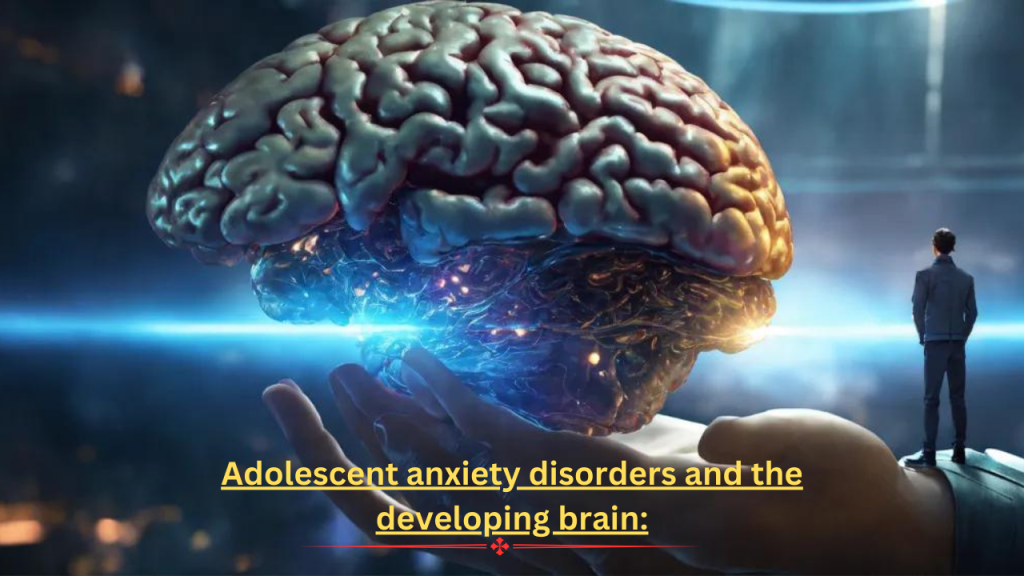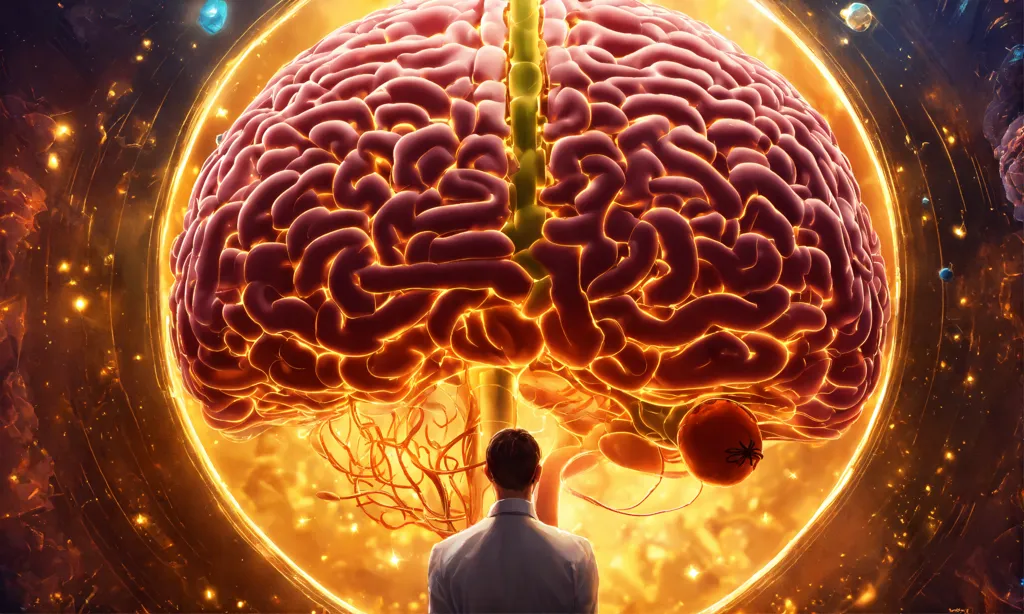SURETIVIAN Chicken Shredder Large Chicken Breast Shredder Tool Twist with Brush&Fork, Visible Meat Shredder Machine, Anti-Slip Strip, Ergonomic Handle, BPA Free, Suitable for Pork Beef Chicken(Red)
$19.99 (as of April 22, 2024 18:00 GMT +00:00 - More infoProduct prices and availability are accurate as of the date/time indicated and are subject to change. Any price and availability information displayed on [relevant Amazon Site(s), as applicable] at the time of purchase will apply to the purchase of this product.)Introduction
Anxiety disorders are among the most common mental health conditions in the world, affecting over 284 million people globally. However, despite their prevalence, anxiety disorders remain widely misunderstood. The complex biological, psychological, and environmental factors that contribute to these disorders are still being uncovered by ongoing scientific research.
This extensive overview aims to summarize our current scientific understanding of anxiety disorders. It will explore what defines different anxiety conditions, their typical symptoms and causes, biological and genetic risk factors, psychological mechanisms, common treatments, and future directions for research. Through examining the multidisciplinary scientific evidence, the goal is to provide insights into these highly nuanced yet treatable conditions.
Defining Anxiety Disorders

Anxiety disorders involve excessive and persistent fear and worry that significantly interferes with daily functioning. They are characterized by persistent and excessive worry about future threats, as well as nervous behaviors that seem disproportionate to actual risks.
There are several distinct categories of anxiety disorders recognized in the Diagnostic and Statistical Manual of Mental Disorders (DSM-5), including:
Generalized anxiety disorder (GAD): Generalized, persistent anxiety and worry about everyday life events and activities, such as work, school, health issues, family responsibilities, finances, etc.
Social anxiety disorder (SAD): Marked fear or anxiety about social situations where embarrassment may occur, such as interacting with strangers, public speaking, authority figures, etc.
Specific phobias: Marked or intense fears caused by the presence or anticipation of a specific object or situation, such as heights, insects, blood, needles, flying, etc.
Panic disorder: Recurrent unexpected panic attacks along with persistent concern about future attacks and worry about implications. Panic attacks are sudden feelings of intense fear accompanied by physical symptoms.
Agoraphobia: Fear and anxiety about places or situations where escape might be difficult or help unavailable if one experiences panic-like symptoms or other incapacitating fear. It often co-occurs with panic disorder.
Separation anxiety disorder: Developmentally inappropriate and excessive fear or anxiety related to separation from home or attachment figures, typically seen in children.
While anxiety is a normal human emotion that helps us cope with threat, anxiety disorders involve abnormal and disproportionate levels of fear, anxiety, or worry that cause significant distress and impairment. Sustained overactivation of threat circuits in the brain is believed to underlie their symptoms and behaviors.
Biological Factors
Compelling research demonstrates that biological vulnerabilities play a significant role in anxiety disorder risk and development. Multiple factors interact to shape neural circuits involved in threat processing, fear learning, and regulation of the stress response system.
Genetics

Numerous family, twin, and adoption studies point to a substantial heritable component for anxiety disorders. The risk of developing GAD, for example, is estimated to be 40-50% genetically influenced. Specific genetic variants are also associated with increased risk.
However, genetics alone do not determine whether someone will develop an anxiety disorder. Environmental factors and gene-environment interactions likely trigger gene expression changes that make the brain and stress response systems more sensitive to prolonged threat states.
Neurotransmitters
Imbalances in serotonin and norepinephrine (noradrenaline), two key neurotransmitters involved in mood and emotions, are implicated in anxiety. Genetic variations influencing the functioning of serotonin and norepinephrine systems have been tied to anxiety vulnerability.
Brain Structure and Circuitry

Imaging studies reveal patterns of over-activity and under-regulation within neural circuits crucial for threat processing, fear regulation, learning, and extinction in those with anxiety disorders compared to healthy controls. Specifically, the amygdala, insula, anterior cingulate cortex, and medial prefrontal cortex may show abnormal activation and connectivity.
Hypothalamic-Pituitary-Adrenal (HPA) Axis
Prolonged stress can lead to dysregulation of the HPA axis and cortisol production. This biological stress response system may be hypersensitive in individuals prone to excessive anxiety and worry. Genes involved in cortisol regulation also influence anxiety risk. Early life stress can permanently alter HPA axis development.
Other Factors
Additional biological contributors include genetic variations impacting the endocannabinoid system, immune system differences, mitochondrial DNA differences, neuropeptide changes, and epigenetics. Factors like estrogen levels in women may also modulate risk. Overall, anxiety disorders stem from complex interactions across multiple biological systems.
Psychological Factors

While biology predisposes individuals, learned associations, thinking patterns, coping styles, and environmental experiences strongly mold whether anxiety manifests and is sustained over time. Various psychological models attempt to explain anxiety disorders:
Pavlovian Conditioning
Classical conditioning occurs when a previously neutral stimulus (e.g. heights) becomes associated with an aversive event and elicits a fear response itself due to repeated pairings. For phobias, traumatic experiences paired with certain objects or situations may instill lasting fears.
Operant Conditioning
Anxiety may be reinforced and maintained through negative reinforcement, when feared thoughts or situations are avoided to escape discomfort – leading to phobic avoidance behaviors that maintain anxiety in a feedback loop over time.
Cognitive Models

Biases in how threat is interpreted, anticipated dangers exaggerated, and likelihood of harm overestimated due to maladaptive schemas or core beliefs (e.g. “I’m vulnerable”, “The world is unsafe”). Cognitive processes like rumination also perpetuate anxiety.
Attachment Styles
Insecure attachment developed in early relationships due to inconsistent caregiving may result in distorted mental representations of self and others as untrustworthy. This interferes with coping and regulation of emotions in the face of stressors.
Personality Traits
Anxiety-prone personality types (e.g. high behavioral inhibition, neuroticism) are predisposed to interpret ambiguous stimuli as threatening due to biases in attention, interpretation and memory for threat-related information.
Fear Networks
Neural fear memory networks may become overconsolidated and generalized, making it difficult for corrective new learning to inhibit old fears even in safe contexts, promoting avoidance and sustained anxiety.
Environmental Triggers
Stressful life events, trauma, academic/work pressure, isolation, lack of control, unpredictability are well-established environmental risk factors that interact with biological and psychological vulnerabilities to increase anxiety risk over the lifespan. Genetics determine base reactivity while life experiences shape anxiety expression.
Treatments for Anxiety Disorders

Given the multi-dimensional contributions of biological, genetic, psychological, social and environmental influences, anxiety disorders often require multimodal treatment approaches:
Psychotherapy
Forms of cognitive behavioral therapy (CBT) are most effective in treating anxiety disorders by modifying thoughts, behaviors and coping skills. Exposure therapy exposes clients gradually and safely to feared cues to overwrite conditioned fear memories through extinction learning.
Medications
Anti-anxiety medications like SSRIs (Prozac, Zoloft), SNRIs (Effexor), and benzodiazepines (Xanax, Klonopin) are commonly used short-term as they target the biological imbalance and alleviate symptoms while behavioral changes are implemented. However, long-term medication use poses risks.
Other Therapies

Other evidence-based modalities include mindfulness/meditation training, relaxation techniques like diaphragmatic breathing, yoga/tai chi to help manage physical arousal, virtual reality exposure therapy, and EMDR for specific phobias or PTSD-related anxiety. Support groups provide coping strategies from peers.
Lifestyle Adjustments
Making sleep, diet, exercise and stress management a priority helps strengthen resilience against anxiety through natural means by optimizing brain and body health. Social support buffers against life stressors also known risk factors.
Integrated Approach
Given complex etiology, most experts recommend multi-targeted treatment plans tailored to the individual that combine pharmacotherapy and evidence-based psychological strategies supplemented by healthy lifestyle adjustments and social support. Different treatment courses may be needed over the lifespan due to changing life demands.
For severe, refractory cases that don’t respond to initial evidence-based interventions, brain stimulation therapies like transcranial magnetic stimulation (TMS) or electroconvulsive therapy (ECT) are sometimes considered. These interventions directly modulate neurological circuits implicated in anxiety dysfunction.
Future Directions in Research

While anxiety disorder treatments continue improving based on ongoing science, many unanswered questions remain. Active areas of exploration to deepen our understanding include:
Identifying more specific genetic and epigenetic factors and their interactions with the environment over the lifespan
Mapping threat processing circuitry in more detail using cutting-edge neuroimaging techniques like fMRI, connectivity analyses, and longitudinal designs
Developing more targeted pharmacological interventions by investigating neurochemical subtypes of anxiety versus a “one size fits all” approach
Refining personalized treatment selection based on matching client profiles and symptoms to specific intervention efficacy
Developing novel psychological tools leveraging virtual reality, augmented reality, smartphones to supercharge exposure therapy and expand access
Applying insights from neuroplasticity research to help rewire overactive fear networks through brain stimulation, neurofeedback or psychedelic therapies
Testing integrative treatment packages which offer more comprehensive relief from all contributing etiological factors
Exploring protective factors associated with anxiety resilience despite genetic/environmental risks through longitudinal cohort studies
Improving early detection and prevention by identifying children/adolescents at-risk to target intervention during sensitive periods of threat circuitry development
Understanding mechanisms driving high rates of co



